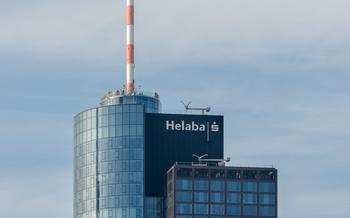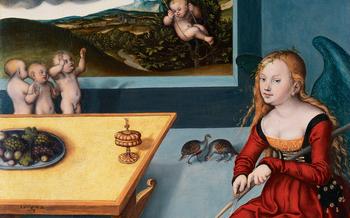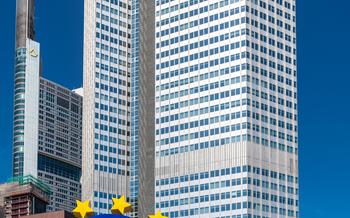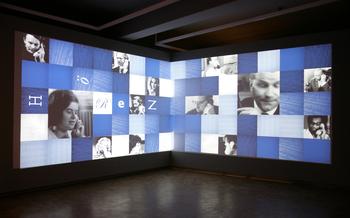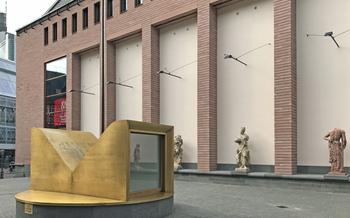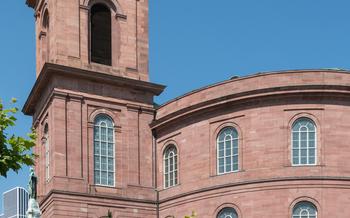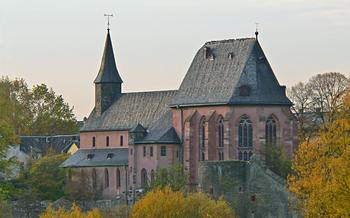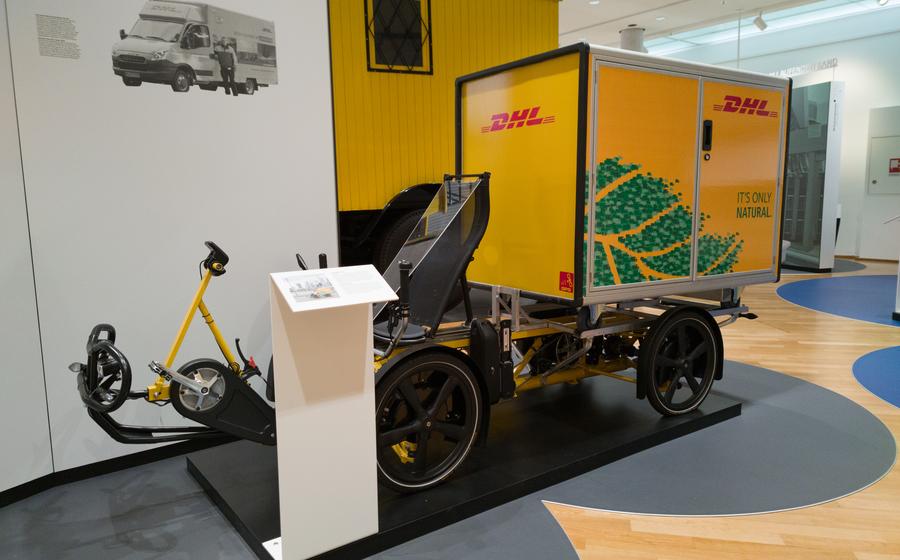
Museum of Communication
- The Museum of Communication: A Journey Through the History of Communication
- Location and Accessibility
- Hours of Operation and Admission Fees
- Guided Tours and Audio Guides
- Must-See Exhibits and Highlights
- Workshops and Educational Programs
- The Museum Shop and Bookstore
- The Museum Cafe
- Accessibility for People with Disabilities
- Tips for Visiting the Museum
- Photography and Videography
- Nearby Attractions and Points of Interest
- Accommodation and Dining Options Nearby
The Museum of Communication: A Journey Through the History of Communication
Located in the heart of Frankfurt, Germany, the Museum of Communication stands as a testament to the ever-evolving world of communication. Established in 1877, this remarkable institution boasts a rich history, showcasing the milestones and innovations that have shaped our ability to connect and share information. As you step through its doors, you embark on a captivating journey through the annals of communication, from ancient methods of message transmission to the cutting-edge technologies that define our modern era.
With a diverse collection of exhibits and interactive displays, the Museum of Communication offers a multisensory experience that engages visitors of all ages. Explore the evolution of writing, from early hieroglyphics to the development of the printing press, and marvel at the ingenuity of early communication devices like the telegraph and the telephone. Immerse yourself in interactive exhibits that allow you to experience the thrill of sending Morse code messages or operating a vintage switchboard.
Location and Accessibility
Address
The Museum of Communication is ideally situated in the heart of Frankfurt, Germany, making it effortlessly accessible to visitors from all directions. Its address is Schaumainkai 53, 60596 Frankfurt am Main, Germany.
Public Transportation Options
Frankfurt's robust public transportation network makes reaching the Museum of Communication a breeze. Situated adjacent to the Museumsufer stop, visitors can conveniently hop off the U-Bahn (subway) lines U1, U2, U3, and U8, or take advantage of the numerous bus lines that service the area.
Parking Availability
For those arriving by car, ample parking options are available in the vicinity of the museum. The closest parking garage, Tiefgarage Museumsufer, is situated directly beneath the Schaumainkai, ensuring a convenient and sheltered parking experience.
Accessibility for People with Disabilities
The Museum of Communication is dedicated to ensuring an inclusive and welcoming environment for all visitors. The entire museum is wheelchair accessible, featuring ramps, elevators, and accessible restrooms. Additionally, Braille signage is provided throughout the exhibitions to assist visually impaired visitors, and sign language interpreters and assistive listening devices are available upon request for those with hearing impairments.
Hours of Operation and Admission Fees
The Museum of Communication is open to the public daily, from Tuesday to Sunday, from 10 am to 5 pm. On Mondays, the Museum is closed. The Museum also follows a special schedule during public holidays. It remains closed on Christmas Day (December 25th) and New Year's Day (January 1st).
Admission fees vary depending on the age and status of visitors. For adults, the entrance fee is 10 euros, while for children and teenagers between the ages of 6 and 18, the fee is 5 euros. Family tickets are also available, allowing two adults and up to three children to enter for a total of 20 euros.
Discounts and concessions are offered to students, seniors, and visitors with disabilities. By presenting a valid ID, students can avail a discounted rate of 8 euros, while seniors (65+) pay a reduced fee of 7 euros. Visitors with disabilities and their companions are entitled to free admission.
Please note that the Museum offers free admission on the first Sunday of every month. This is a great opportunity for visitors to explore the Museum's exhibits and participate in activities without any charge.
Guided Tours and Audio Guides
Guided tours of the Museum of Communication are available in English, German, French, and Spanish. Guided tours provide an in-depth look at the museum's exhibits and history. They are led by knowledgeable guides who can answer questions and provide additional insights.
The cost of a guided tour is €5 per person, in addition to the regular admission fee. Guided tours can be booked in advance by calling the museum or by visiting the website.
In addition to guided tours, the museum also offers audio guides. Audio guides are available in English, German, French, and Spanish. They provide a self-guided tour of the museum's exhibits and can be rented for €3 per person.
Whether you choose to take a guided tour or use an audio guide, you will have a more enriching experience at the Museum of Communication.
Must-See Exhibits and Highlights
The Museum of Communication boasts an impressive array of permanent and temporary exhibits that showcase the rich history and evolution of communication. Visitors can embark on a captivating journey through the ages, exploring the development of writing, printing, telegraphy, telephony, radio, television, and the internet.
Permanent Exhibits:
The History of Writing: This exhibit delves into the origins and evolution of writing, from ancient cave paintings to the invention of the alphabet. Visitors can trace the development of writing systems from various cultures, including cuneiform, hieroglyphics, and Chinese characters.
The Printing Revolution: Discover the transformative impact of the printing press on the world. Explore the life and work of Johannes Gutenberg, the inventor of the printing press, and witness the spread of knowledge and ideas that revolutionized society.
The Age of Communication: Journey through the remarkable advancements in communication technology, from the telegraph and telephone to the rise of the internet. Experience the evolution of mass media, including radio and television, and learn about their profound impact on global communication.
Temporary Exhibits:
Digital Natives: This exhibit explores the impact of digital technology on communication and society. Visitors can learn about the rise of social media, the challenges of online privacy, and the ethical implications of artificial intelligence.
The Future of Communication: Gaze into the future of communication and discover emerging technologies that are shaping the way we interact. Explore the possibilities of virtual reality, augmented reality, and 5G networks, and envision the boundless possibilities of communication in the years to come.
Interactive Exhibits:
Morse Code Workshop: Try your hand at sending and receiving messages using Morse code, a method of communication that revolutionized long-distance communication in the 19th century.
Virtual Reality Experience: Immerse yourself in a virtual reality environment and experience the history of communication from a unique perspective. Travel back in time to witness key moments in the development of writing, printing, and electronic communication.
Interactive Timeline: Explore a dynamic timeline that showcases the milestones in the history of communication. Touchscreen displays provide in-depth information on each event, allowing visitors to delve deeper into the stories behind the innovations.
Workshops and Educational Programs
The Museum of Communication offers a diverse range of workshops and educational programs designed to engage visitors of all ages in hands-on learning and experimentation. These programs provide an excellent opportunity to delve deeper into the world of communication and explore its various facets.
For children, the museum hosts interactive workshops that introduce them to the basics of communication in a fun and engaging way. These workshops may involve activities such as creating their own Morse code messages, building simple circuits, or experimenting with different forms of communication.
Adults can participate in workshops that explore more advanced topics, such as the history of cryptography, the evolution of the internet, or the impact of social media on society. These workshops offer a unique blend of theoretical knowledge and practical applications, making them ideal for anyone interested in gaining a deeper understanding of communication.
The museum also offers educational programs for schools and groups, which can be tailored to specific curriculum needs. These programs typically include guided tours of the exhibits, hands-on activities, and discussions on various communication-related topics. They provide an excellent opportunity for students to learn about the history and significance of communication in a dynamic and interactive setting.
Overall, the workshops and educational programs at the Museum of Communication offer a valuable resource for anyone looking to expand their knowledge of communication, foster their creativity, and engage in hands-on learning experiences.
The Museum Shop and Bookstore
At the Museum of Communication, visitors can find a treasure trove of items related to the world of communication. The museum shop offers a wide range of unique souvenirs and gifts, including postcards, posters, books, and other items featuring the museum's collection and exhibitions.
The museum bookstore is a haven for those interested in the history and theory of communication. Here, visitors can find an extensive selection of books on topics such as the history of writing, the development of printing, and the rise of the internet. There is also a section dedicated to children's books on communication and technology.
Whether you're looking for a special gift for a friend or family member or simply want to expand your knowledge of communication, the Museum of Communication's shop and bookstore are sure to have something for you.
The Museum Cafe
After exploring the fascinating world of communication, visitors can take a break and recharge at the Museum Cafe. Located within the museum, the cafe offers a cozy and inviting atmosphere to relax and enjoy a light snack or beverage. Visitors can choose from a selection of sandwiches, salads, cakes, and pastries, as well as a variety of hot and cold drinks.
The Museum Cafe is a great place to unwind and reflect on the exhibits, or simply to enjoy a moment of peace and quiet. With its comfortable seating and friendly staff, the cafe is a welcome respite from the hustle and bustle of the city.
Accessibility for People with Disabilities
At the Museum of Communication, accessibility for people with disabilities is a top priority. The museum is fully wheelchair accessible, with ramps and elevators providing easy access to all levels. Braille signage is available throughout the exhibits, allowing visually impaired visitors to navigate the museum independently. Sign language interpreters are available upon request for deaf visitors, and assistive listening devices are provided for hearing impaired visitors, ensuring that everyone can fully enjoy and participate in the museum's offerings. The museum staff is dedicated to creating an inclusive and welcoming environment for all visitors, regardless of their abilities.
Tips for Visiting the Museum
To make the most of your visit to the Museum of Communication, it's important to plan ahead and arrive early. The museum can get crowded, especially during peak tourist season, so it's a good idea to arrive early to avoid long lines and crowds. Once inside, take your time to explore the exhibits and participate in the interactive activities. Allow plenty of time to fully immerse yourself in the world of communication and learn about its rich history and evolution.
To enhance your visit, consider taking advantage of the guided tours or audio guides offered by the museum. These tours provide in-depth insights into the exhibits and offer a more personalized experience. The museum also hosts a variety of special events and workshops throughout the year, which are a great way to learn about new developments in communication and engage with experts and enthusiasts in the field.
Photography and Videography
At the Museum of Communication, visitors are generally allowed to capture their experiences through photography and videography to create lasting memories of their visit. However, to ensure a respectful and enjoyable environment for all, certain guidelines should be followed.
Flash photography is prohibited within the museum's premises to protect the delicate artifacts and exhibits from potential damage. The use of tripods, monopods, and other photography equipment is also not permitted, as they may obstruct other visitors' paths or disturb the flow of foot traffic.
When taking photos or videos, visitors are kindly requested to be courteous of their fellow guests and avoid causing any disruptions or inconveniences. Respecting the privacy of other individuals is essential, so it is important to refrain from capturing images or footage of people without their consent.
By adhering to these guidelines, visitors can contribute to a positive and inclusive atmosphere at the Museum of Communication, allowing everyone to enjoy and appreciate the exhibits without distractions or hindrances.
Nearby Attractions and Points of Interest
The Museum of Communication is ideally situated in the heart of Frankfurt, surrounded by a wealth of other attractions, cultural venues, and historical landmarks. Visitors can easily extend their exploration of the city by combining a visit to the museum with other activities.
The immediate vicinity of the museum offers a diverse range of attractions. The nearby Römerberg square boasts the iconic Römer, a historic town hall that has witnessed centuries of Frankfurt's history. Just a short stroll away, visitors can immerse themselves in the world of art at the Städel Museum, renowned for its impressive collection of paintings, sculptures, and drawings spanning various eras.
For those seeking a more immersive cultural experience, the Schauspiel Frankfurt, the city's renowned theater, stages captivating performances and productions. Alternatively, visitors can delve into the wonders of science at the Senckenberg Natural History Museum, home to fascinating exhibits on biodiversity, evolution, and the Earth's geological history.
Moreover, Frankfurt's vibrant shopping district, the Zeil, is a haven for retail therapy enthusiasts. With its array of international brands, department stores, and boutiques, the Zeil offers a delightful shopping experience for visitors of all tastes.
With its central location and proximity to numerous other attractions, the Museum of Communication serves as an ideal starting point for exploring the diverse offerings of Frankfurt. Visitors can effortlessly create a personalized itinerary that combines cultural immersion, historical exploration, and retail indulgence, ensuring a memorable and fulfilling experience in this vibrant city.
Accommodation and Dining Options Nearby
The Museum of Communication is surrounded by a diverse range of accommodation and dining options, catering to various budgets and preferences. Whether you seek a luxurious stay or a cozy bed and breakfast, you'll find suitable options within walking distance. Explore the charming streets and discover hidden gems, such as boutique hotels housed in historic buildings.
For a culinary adventure, indulge in the delectable offerings of nearby restaurants. Savor traditional German cuisine at a gemütlich tavern, or embark on a global culinary journey at international eateries. From fine dining experiences to casual cafes, there's something to satisfy every palate.
Before or after your museum visit, take a leisurely stroll and discover the vibrant culinary scene. Enjoy a hearty breakfast to fuel your day of exploration, or unwind with a refreshing drink and a light snack as you reflect on the fascinating exhibits you've encountered.
